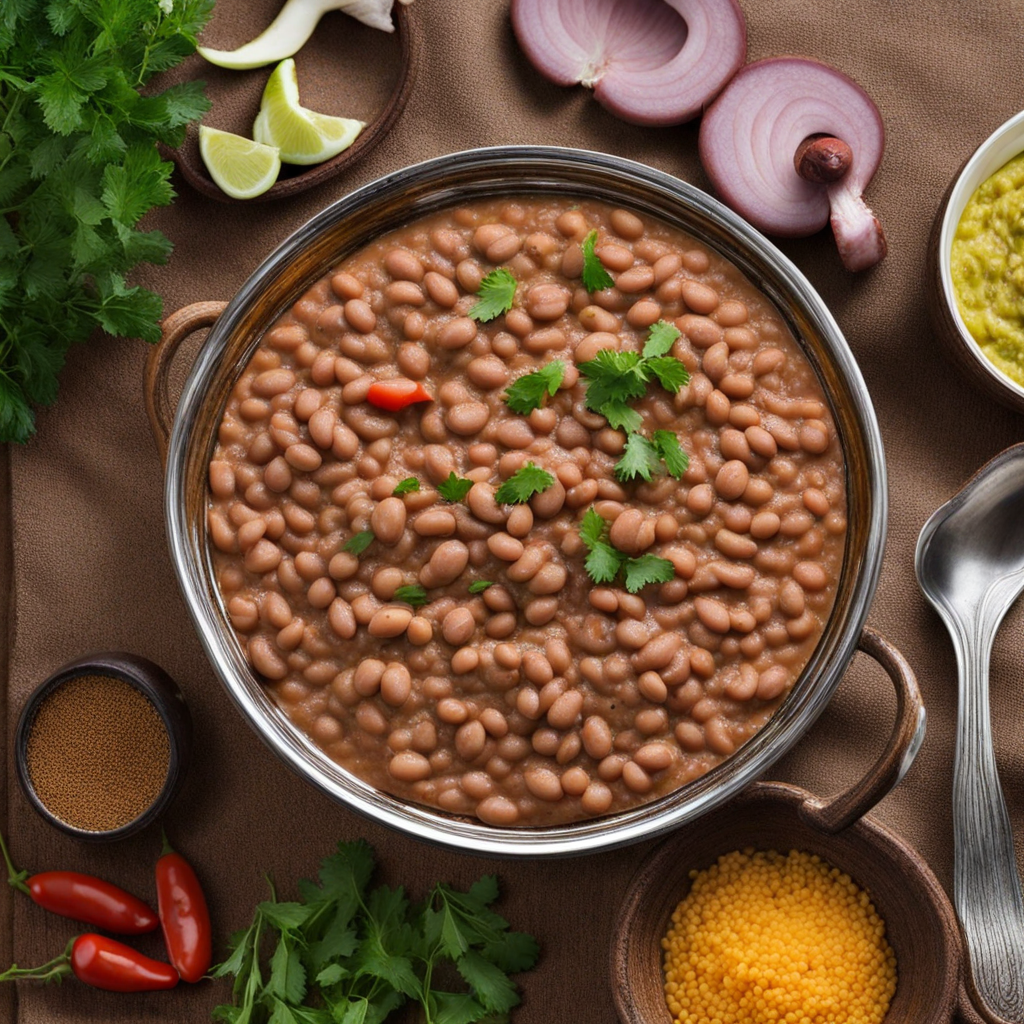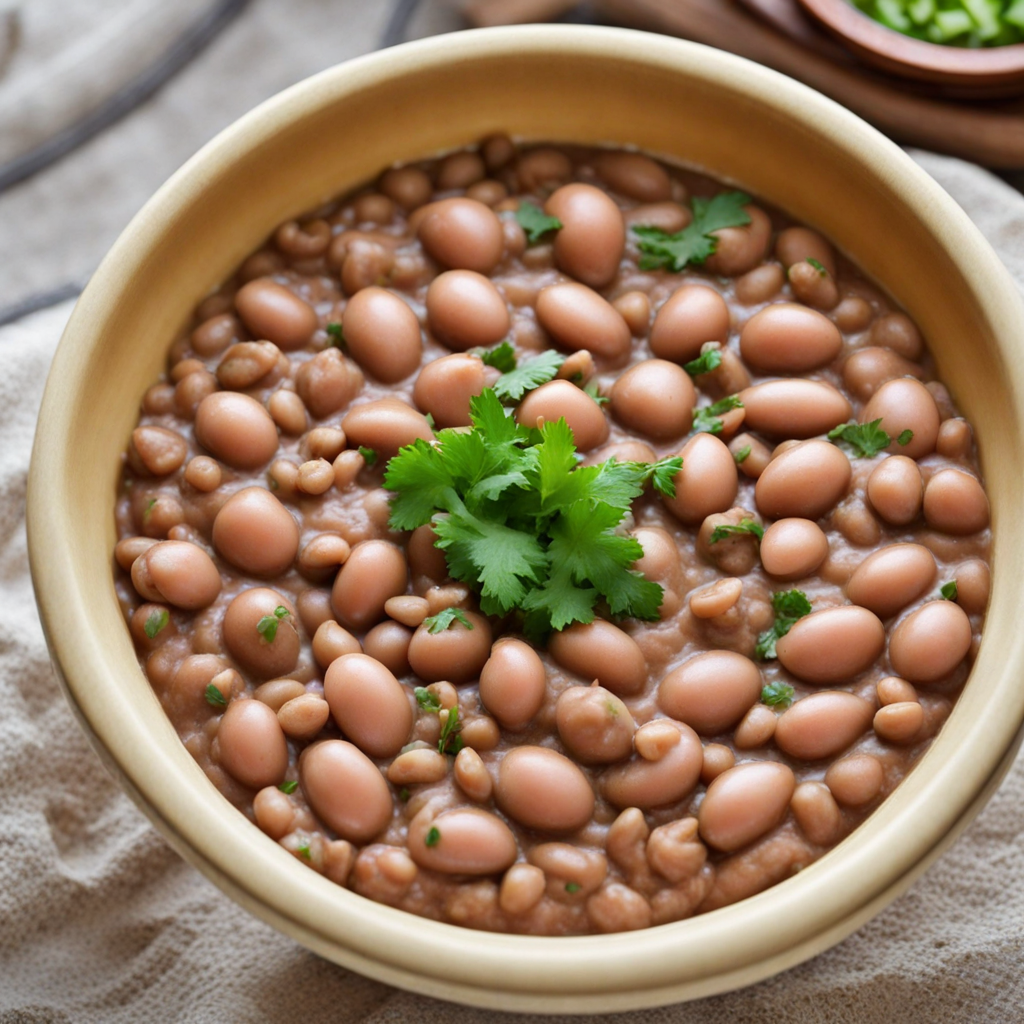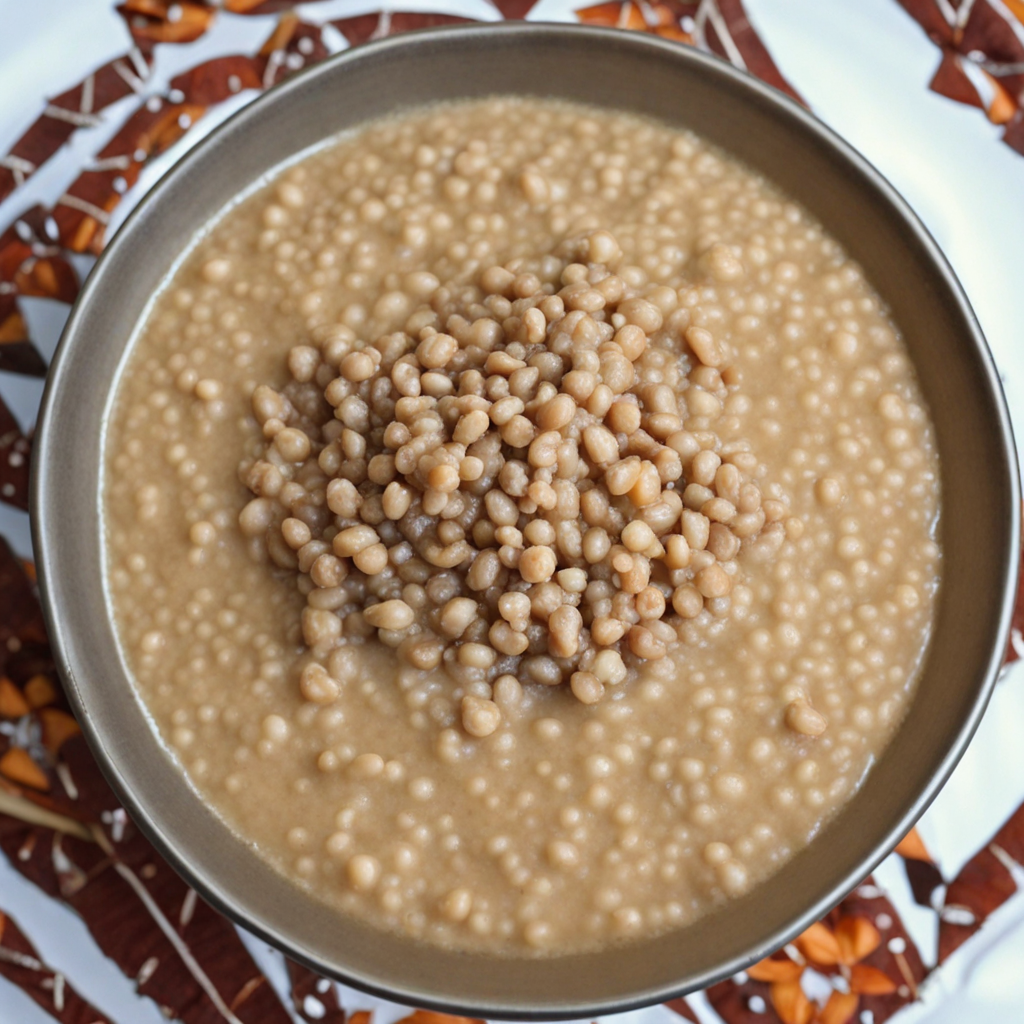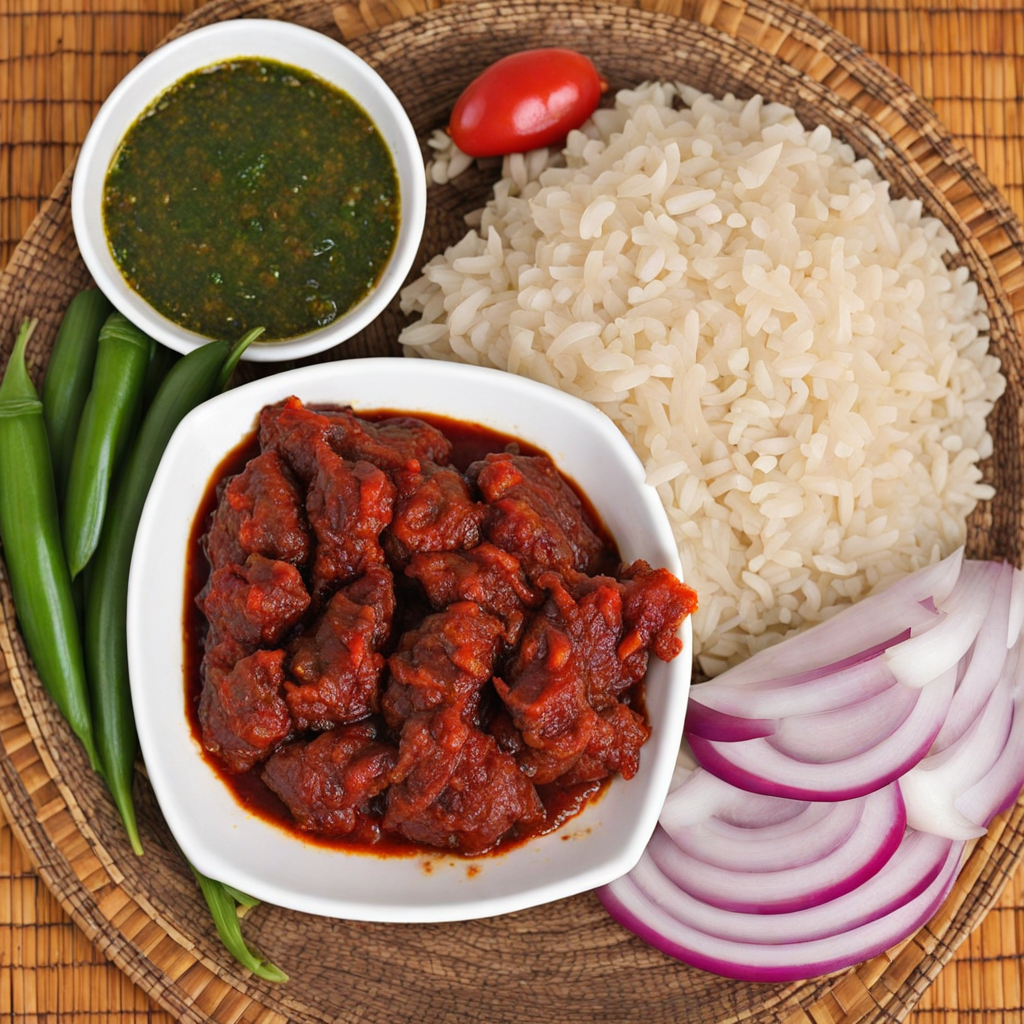Ful Medames
Ful Medames is a traditional Sudanese dish that showcases the rich culinary heritage of the region. At its core, this dish features fava beans, which are slow-cooked until they reach a creamy consistency. The beans are often seasoned with a variety of spices, including cumin, garlic, and lemon juice, which impart a vibrant flavor profile that is both earthy and refreshing. Served warm, Ful Medames is typically garnished with olive oil, chopped parsley, and sometimes diced tomatoes, creating a colorful and aromatic presentation. In Sudan, Ful Medames is more than just a meal; it is a cherished social dish often enjoyed for breakfast or lunch. It is commonly accompanied by a variety of sides such as fresh bread, hard-boiled eggs, and sometimes a spicy chili sauce, allowing diners to customize their experience. This versatility makes it a perfect communal dish, bringing friends and family together around the table to savor the flavors and share stories. The texture of Ful Medames is one of its most appealing attributes, with the fava beans being tender yet slightly chunky, providing a satisfying mouthfeel. The blend of spices and fresh ingredients creates a harmony that is both comforting and invigorating. With its rich history and vibrant flavors, Ful Medames invites food enthusiasts to explore a unique taste of Sudan, making it an essential dish for anyone looking to expand their culinary horizons.
How It Became This Dish
The Rich History of فول مدمس (Foul Medames) in Sudan #### Origins and Early History Foul medames, a beloved dish in Sudan, has roots that stretch back to ancient Egypt and the broader region of the Nile Valley. The name "foul medames" comes from the Arabic word "foul," meaning fava beans, and "medames," which refers to their cooking method. This hearty dish is made primarily from fava beans, which were cultivated in the region for thousands of years. Archaeological evidence suggests that fava beans were one of the first domesticated crops in the area, dating back to around 4000 BCE. The dish began to take shape in the context of ancient Egyptian cuisine, where fava beans were a staple food. It is thought that the Egyptians consumed them not only for their nutritional value but also for their ability to sustain energy, especially for laborers working on monumental projects. As trade routes developed, fava beans spread through the Mediterranean and the Middle East, leading to the dish's regional adaptations. #### Cultural Significance in Sudan In Sudan, foul medames is more than just a dish; it embodies the cultural and social fabric of the nation. It is commonly consumed for breakfast, often accompanied by bread, hot sauce, and various toppings such as boiled eggs, onions, tomatoes, or oil. The dish is inexpensive, nutritious, and filling, making it a staple for families across all socio-economic classes. Its preparation and consumption often bring families and communities together, fostering a sense of unity and shared culture. Foul medames is particularly significant during Ramadan, the Islamic holy month of fasting. At iftar—the meal that breaks the fast—foul medames is a common feature on tables across Sudan. The dish’s rich flavor and hearty ingredients provide the sustenance that many seek after a day of fasting. It is not just a meal; it represents hospitality and generosity, as families often share their food with neighbors and friends. #### Development Over Time As Sudan has evolved politically and socially, so has the preparation and perception of foul medames. The dish has remained rooted in tradition, but it has also adapted to modern cooking methods and tastes. In urban areas, foul medames can be found in numerous eateries and street vendors, where it is served quickly and affordably to cater to a fast-paced lifestyle. In the late 20th and early 21st centuries, Sudan experienced significant social and political upheaval, which also influenced its culinary landscape. Despite these challenges, food has remained a source of comfort and stability. Foul medames, being a dish that requires minimal ingredients and preparation time, gained popularity as families sought affordable and nutritious meals amidst economic difficulties. The globalization of cuisine has also impacted how foul medames is perceived and consumed. As Sudanese communities have migrated to various parts of the world, they have carried their culinary traditions with them. In diaspora communities, foul medames has found a new audience, often being incorporated into broader Middle Eastern and North African cuisine. This has opened the door for fusion variations, where traditional toppings are combined with local ingredients, creating a dynamic culinary dialogue. #### Regional Variations While foul medames has a standardized base of fava beans, its preparation and serving can vary significantly from one region to another. In Sudan, it is often enriched with spices and herbs unique to the local palate. The addition of ingredients such as chili peppers, garlic, and lemon gives it a distinctive flavor profile that sets it apart from its Egyptian counterpart, which tends to be simpler and more straightforward in flavor. In Sudanese households, foul medames is sometimes served as part of a larger breakfast spread, including items such as kisra (a type of fermented flatbread), eggs, and various salads. The communal aspect of sharing food is emphasized: families often gather around a large plate, dipping their bread into the rich, flavorful beans. #### Contemporary Popularity and Global Recognition In recent years, there has been a growing interest in Sudanese cuisine, and foul medames has become one of the more recognized dishes among food enthusiasts worldwide. Its health benefits, including high protein content, fiber, and antioxidants, have garnered attention, especially in the context of the global movement toward plant-based diets. Food festivals, culinary events, and social media platforms have played a significant role in promoting foul medames beyond Sudan's borders. Chefs and food bloggers have introduced this dish to international audiences, highlighting its versatility and cultural significance. Restaurants specializing in Middle Eastern and North African cuisine are increasingly featuring foul medames on their menus, allowing patrons to experience a taste of Sudanese culture. #### Conclusion Foul medames is more than just a dish; it is a testament to the resilience and adaptability of Sudanese culture throughout history. From its ancient origins in the Nile Valley to its modern interpretations, foul medames reflects the social, political, and economic realities of its time. As it continues to evolve, this dish remains a symbol of community, nourishment, and identity. Whether enjoyed in a bustling market in Khartoum or a cozy home in a distant land, foul medames bridges generations and cultures, celebrating the rich history of Sudanese cuisine.
You may like
Discover local flavors from Sudan







